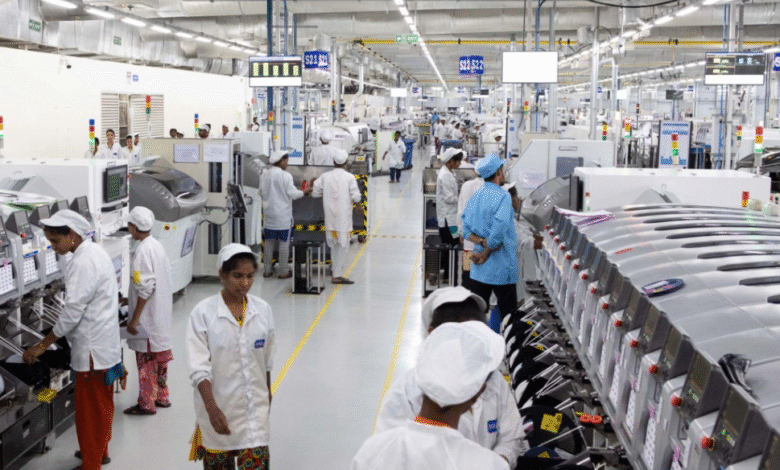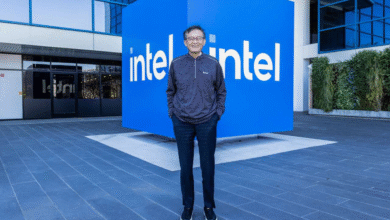Apple Production Relocation: Navarro Critiques Tim Cook

Apple production relocation has been a hot topic in recent years, especially under the scrutiny of political figures like the Trump administration. Tim Cook, the CEO of Apple, has faced criticism from White House trade advisor Peter Navarro, who argues that the company has been slow to move its manufacturing operations out of China. As pressure mounts to bolster domestic production of iPhones, there is increasing concern over the potential tariffs on foreign-made devices which could drive up costs for consumers. In response to these challenges, Apple has started to diversify its supply chain by exploring options in countries like India, yet many analysts suggest that a complete shift to U.S. production is unlikely due to significant cost implications. With an estimated price tag of $3,500 for a U.S.-made iPhone, the debate around Apple’s production strategies continues to gain attention across the industry and politics alike.
The relocation of Apple’s production facilities has sparked a frenzy of discussions about reshoring manufacturing jobs back to America. With Tim Cook at the helm, Apple has been navigating a complex landscape influenced by trade policies and the broader economic climate. As pressure from government officials escalates, including critiques from figures like Peter Navarro, the challenges of moving iPhone manufacturing from its established bases in countries such as China and India become more apparent. The conversation around American manufacturing is not just about where the products are made, but also how this impacts pricing and consumer access to technology. The dynamic between U.S. leadership and major corporations like Apple shapes the future of production strategies in the tech industry.
Peter Navarro’s Critique of Tim Cook on Apple’s Production Strategy
In a recent interview, Peter Navarro, former trade advisor to the Trump administration, did not hold back on his criticism of Tim Cook, the CEO of Apple. Navarro pointed out that Cook’s requests for extended time to relocate Apple’s manufacturing operations from China have become a drawn-out saga that has yet to yield significant results. He characterized Cook’s ongoing negotiations as akin to a “long-running soap opera in Silicon Valley,” highlighting the ongoing tension between corporate strategy and government demands.
Navarro’s remarks underscore the pressure the Trump administration placed on Apple to enhance its production capabilities within the United States. Apple has faced mounting expectations to boost domestic manufacturing, especially with ongoing geopolitical tensions surrounding its heavy reliance on Chinese factories. As Apple looks to diversify its production—including moving some assembly operations to countries like India—critics argue that the pace of transformation is too slow and not in line with technological advancements in U.S. manufacturing.
Frequently Asked Questions
What are the challenges associated with Apple production relocation from China to the U.S.?
Apple production relocation presents several challenges, including high manufacturing costs, a skilled labor shortage in the U.S., and the complexities of supply chain management. Experts argue that transitioning iPhone manufacturing from China to the U.S. could lead to significantly higher retail prices, potentially pricing some consumers out of the market.
How is Tim Cook responding to pressure for Apple to relocate production to the U.S.?
Tim Cook has consistently requested additional time to move Apple production out of China, responding to the pressures from the Trump administration. Analysts claim he is focusing on gradual adjustments, such as increased production in India to offset supply chain risks.
What impact did the Trump administration have on Apple production relocation discussions?
The Trump administration intensified discussions around Apple production relocation by imposing threats of tariffs on products manufactured abroad. This confronted CEO Tim Cook with increased pressure to consider moving more iPhone manufacturing operations to the U.S.
Is Apple planning to increase its U.S. production capacity significantly?
While Apple has announced a $500 billion investment in the U.S., the company currently manufactures very few products domestically. Initiatives like assembling the Mac Pro in Texas indicate a commitment, but experts remain skeptical about a large-scale iPhone production relocation from abroad to the U.S.
Could an Apple iPhone manufactured in the U.S. become too expensive for consumers?
Yes, estimates suggest that an iPhone manufactured in the U.S. might retail as high as $3,500 due to increased labor and production costs. This raises concerns about consumer affordability and market viability for a U.S.-made iPhone.
What are Peter Navarro’s views on Tim Cook’s Apple production relocation efforts?
Peter Navarro criticizes Tim Cook’s pace in relocating Apple production away from China, suggesting that advancements in technology should hasten the process. He believes Cook should be more proactive in establishing manufacturing capabilities both domestically and globally.
What manufacturing locations is Apple considering for production outside of China?
Apple has increased its production efforts in India as part of its strategy to diversify manufacturing locations and mitigate risks from tariffs and geopolitical tensions associated with China.
How can AI influence Apple’s ability to relocate production?
AI and advanced manufacturing techniques could potentially streamline Apple’s production processes, enhancing efficiency and reducing costs, which might facilitate a smoother transition of manufacturing operations to the U.S. or other regions.
What has been the response from analysts regarding Apple production relocation to the U.S.?
Analysts and supply chain experts generally view a complete relocation of Apple production to the U.S. as unfeasible due to cost implications and logistical challenges involved in manufacturing high volumes of iPhones domestically.
How does Apple balance production relocation with global demand for its products?
Apple balances production relocation concerns by strategically increasing production in countries like India while maintaining significant manufacturing capabilities in China to meet global demand effectively without compromising supply chain stability.
| Key Point | Details |
|---|---|
| Navarro’s Criticism | Peter Navarro criticized Tim Cook for not relocating Apple’s production quickly enough. |
| Trump’s Tariffs | Trump threatened a 25% tariff on iPhones produced outside the U.S. and asked Cook not to build in India. |
| Apple’s Production in China | The majority of Apple’s flagship iPhone production is still based in China. |
| Increase in Indian Production | Apple has begun to increase manufacturing in India as a response to tariffs. |
| Customer Cost Concerns | Experts suggest that U.S.-made iPhones could be priced at around $3,500 due to higher production costs. |
| Advanced Manufacturing Techniques | Navarro argues that new technologies should make it possible for Apple to produce in the U.S. |
| Apple’s Commitment to U.S. Production | Apple reaffirmed a commitment to manufacture the Mac Pro in Texas and plans to invest $500 billion in the U.S. |
Summary
Apple production relocation has been a contentious topic, particularly with ongoing criticisms from figures like Peter Navarro towards Tim Cook. Amid rising pressure from the Trump administration, Apple faces significant challenges in moving its manufacturing operations out of China. While Apple has begun to diversify its production base by increasing activities in India, the feasibility of relocating all iPhone production to the U.S. remains dubious due to potential cost implications. The discussion around Apple production relocation highlights broader issues of trade, tariffs, and the evolving landscape of technology manufacturing.




